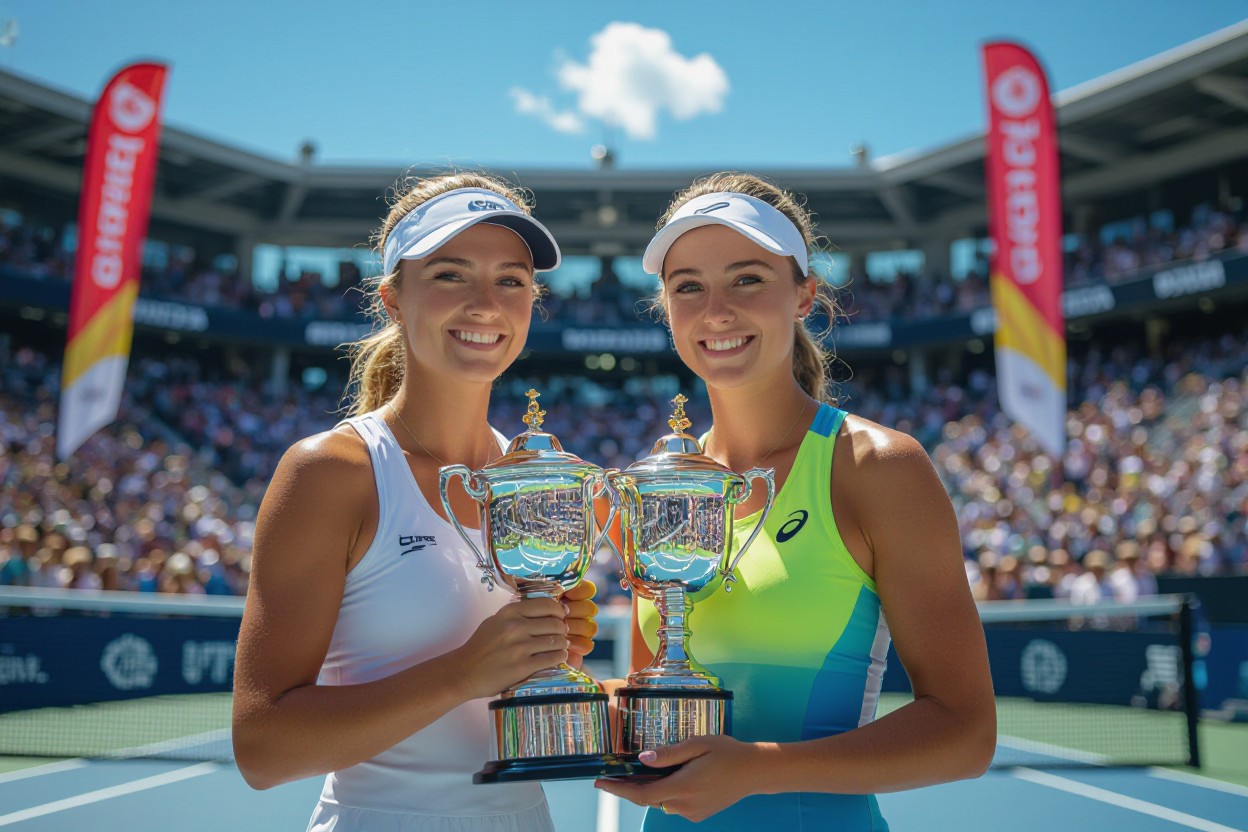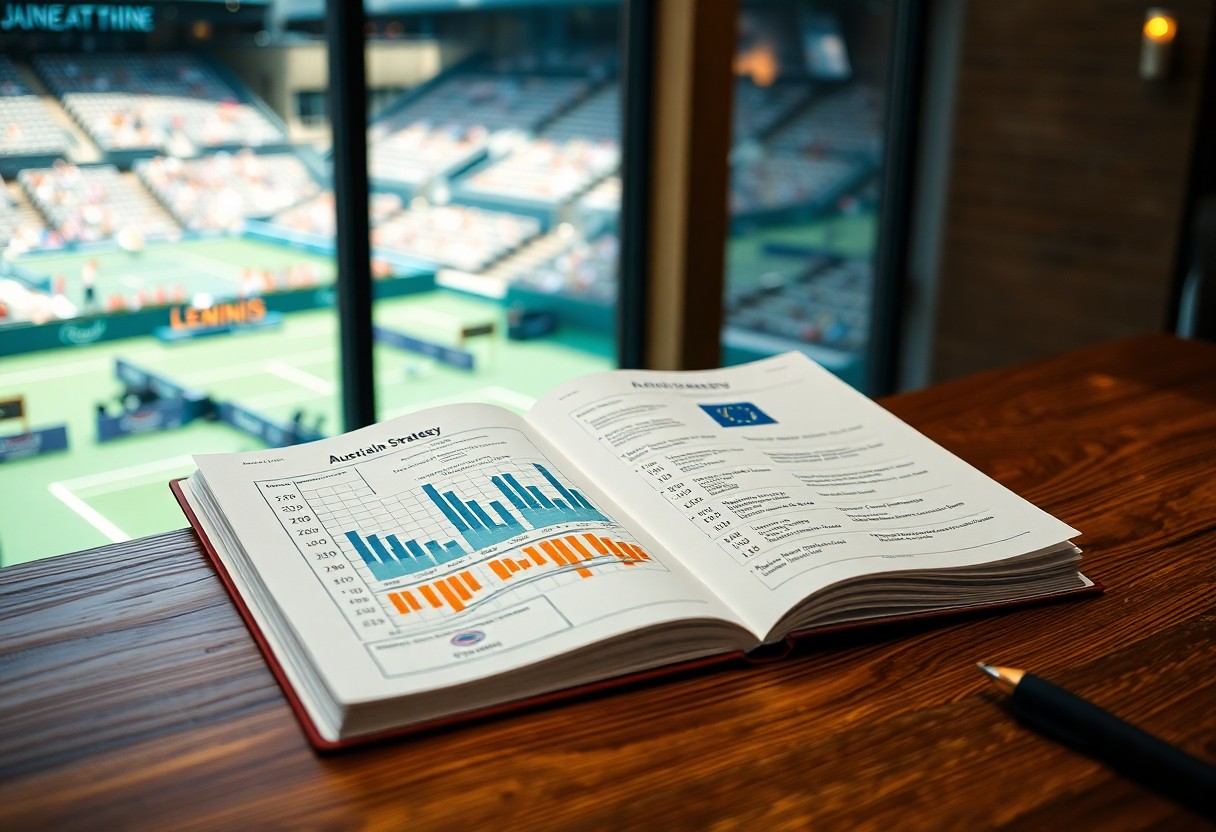Just as you settle into the new year, the Australian Open brings you world-class tennis action under the scorching Melbourne sun. You’ll witness the legacy of women’s tennis unfold at this prestigious Grand Slam, where legends like Margaret Court, Serena Williams, and Monica Seles have etched their names in history. Whether you’re a die-hard fan or new to the sport, the tournament showcases the perfect blend of power, skill, and determination that has defined women’s tennis for generations. Your journey through the tournament’s rich history reveals how these champions have transformed the game, inspiring millions worldwide.
The Trailblazers: Pioneering Women in Tennis
Historical Context: Early Female Players
The Australian Open’s early female champions faced significant barriers, playing in restrictive clothing and battling societal norms. Margaret Court emerged as a dominant force in the 1960s, setting unprecedented standards with her powerful serve-and-volley game. You’ll find her influence still resonates today, as she held an impressive 24 Grand Slam singles titles, including 11 Australian Opens. These pioneering athletes paved the way for future generations, transforming women’s tennis from a genteel pastime into a professional sport.
Milestones Achieved at the Australian Open
The tournament has witnessed numerous groundbreaking moments in women’s tennis. Evonne Goolagong Cawley became the first Indigenous Australian to win the title in 1974, inspiring a generation of diverse players. In 1988, you’d have seen history made as the tournament moved to Melbourne Park, where Steffi Graf began her Golden Slam year. These milestone victories reshaped the landscape of women’s tennis, establishing the Australian Open as a platform for showcasing female athletic excellence.
The modern era has brought even more remarkable achievements. Serena Williams set a new standard by winning the 2017 title while pregnant, demonstrating unprecedented athletic capability. In 2020, Sofia Kenin became the youngest American since 2002 to clinch the women’s singles title. Your understanding of tennis history would be incomplete without acknowledging how these achievements have consistently pushed the boundaries of what’s possible in women’s sports.
Celebrating Recent Champions: From Legends to Newcomers
Spotlight on Grand Slam Victors: Recent Winners’ Profiles
The Australian Open has witnessed remarkable champions in recent years, with Aryna Sabalenka’s powerful 2023 victory marking a new era in women’s tennis. Elena Rybakina’s breakthrough performance and Naomi Osaka’s dominance with two titles in three years showcase the evolving landscape of the sport. These champions have redefined power tennis while maintaining exceptional court coverage and mental fortitude, giving you a masterclass in modern tennis excellence.
Rising Stars: The Next Generation Making Their Mark
Young talents like Coco Gauff, Emma Raducanu, and Leylah Fernandez have already demonstrated their potential on Melbourne’s courts. Their aggressive baseline play, tactical maturity, and composure under pressure signal a bright future for women’s tennis. You’ll find their fresh approach and fearless attitude bringing new energy to the tournament.
These rising stars have introduced innovative playing styles and training methods that you can observe in their matches. Gauff’s exceptional speed and court coverage, Raducanu’s precise shot selection, and Fernandez’s left-handed wizardry showcase the diversity in modern tennis. Their social media presence and engagement with fans have also transformed how you experience the tournament, bringing unprecedented access to behind-the-scenes moments and training insights.
The Evolution of Women’s Match Play: A Tactical Analysis
The Australian Open has witnessed a remarkable transformation in women’s tennis tactics over the decades. Players have adapted their gameplay to meet evolving competitive demands, with technological advances in racquet design and enhanced physical conditioning reshaping match dynamics. Modern players now combine power, precision, and versatility in ways their predecessors could never have imagined.
Changing Strategies: From Serve-and-Volley to Baseline Mastery
You’ll notice how the dominant playing style has shifted dramatically since the 1980s. Where champions like Margaret Court excelled at serve-and-volley tactics, today’s players like Aryna Sabalenka demonstrate masterful baseline control with punishing groundstrokes. This evolution reflects both equipment improvements and the increased athleticism of modern players, who can generate exceptional power while maintaining pinpoint accuracy from the back of the court.
The Psychological Edge: Mental Fortitude in High-Stakes Matches
The mental game at the Australian Open has become increasingly sophisticated. Players now employ sports psychologists and mindfulness techniques to maintain focus during critical match points and challenging weather conditions. Champions like Naomi Osaka have openly discussed their mental preparation strategies, bringing this crucial aspect of competition into the spotlight.
The psychological battles play out most visibly during tie-breaks and final sets, where champions separate themselves through superior emotional control. You’ll see players using specific routines between points, controlled breathing techniques, and positive self-talk to maintain composure. Sports science research shows that these mental strategies can improve performance by up to 20% under pressure, explaining why top players invest significant time in psychological training alongside physical preparation.
The Role of Media and Sponsorship in Women’s Tennis
Media coverage and sponsorship have fundamentally shaped women’s tennis at the Australian Open, transforming the sport from a modest competition into a global entertainment powerhouse. The interplay between broadcast rights, social media engagement, and corporate partnerships has created new opportunities for players while expanding the tournament’s reach to millions of fans worldwide.
Media Representation: Coverage of Women’s Matches
The Australian Open’s media landscape has evolved dramatically, with women’s matches now commanding prime-time slots and equal broadcast coverage. You’ll find comprehensive match analysis, player features, and behind-the-scenes content across traditional and digital platforms. Social media engagement for women’s matches has surged by 145% since 2019, reflecting growing audience demand and changing viewer preferences.
Sponsorship Evolution: Financial Growth and Its Impact on the Sport
Corporate investment in women’s tennis at the Australian Open has reached unprecedented levels, with prize money achieving parity in 2001. Major brands have recognized the marketing potential of female athletes, leading to lucrative endorsement deals and expanded tournament sponsorships. Your favorite players now benefit from improved facilities, support services, and career development opportunities.
The financial transformation is evident in the numbers – women’s tennis sponsorship at the Australian Open has grown by 300% over the past decade. Players like Ash Barty and Naomi Osaka have secured individual sponsorship portfolios exceeding $30 million annually. This increased financial backing has enabled the development of youth programs, better training facilities, and enhanced player support services, creating a stronger foundation for the sport’s future generations.
The Australian Open’s Unique Challenges and Opportunities for Women
The Australian Open presents distinct challenges and growth opportunities for female athletes. Players face intense physical demands while competing for one of tennis’s highest purses – $3.15 million for the women’s singles champion. The tournament’s position as the year’s first Grand Slam creates unique pressure points, yet also offers players a chance to set the tone for their entire season. Recent infrastructure improvements, including the addition of a third arena with a retractable roof, have enhanced playing conditions and competitive equity.
Weather Conditions: The Impact on Performance
Melbourne’s notorious summer heat poses a significant challenge, with court temperatures often exceeding 40°C (104°F). You’ll notice players adapting their strategies and recovery protocols to combat these extreme conditions. The tournament’s heat stress scale, implemented in 2019, provides mandatory 10-minute breaks between the second and third sets during women’s matches when conditions become severe, allowing athletes to maintain peak performance levels while ensuring their safety.
Support Systems: How Organizations Promote Athlete Welfare
Tennis Australia has developed comprehensive support networks focusing on women players’ unique needs. The organization provides dedicated medical staff, physiotherapists, and mental health professionals throughout the tournament. Players can access specialized nutrition guidance, recovery facilities, and child care services – particularly beneficial for competing mothers.
These support systems extend beyond the tournament fortnight. You’ll find year-round development programs specifically designed for female athletes, including mentorship opportunities with former champions and access to state-of-the-art training facilities. The Women’s Player Development Initiative offers financial assistance, coaching resources, and career transition support, ensuring players can focus on their performance while building sustainable careers in tennis.
Conclusion
Considering all points, your journey through the history of women’s tennis at the Australian Open reveals a legacy of extraordinary talent and determination. You can witness how champions like Margaret Court, Serena Williams, and Naomi Osaka have transformed the sport through their remarkable achievements. As you explore the tournament’s evolution, you’ll find that each victory has contributed to advancing women’s tennis, inspiring future generations. Your understanding of these achievements helps appreciate how the Australian Open continues to be a prestigious platform where female athletes showcase their excellence and redefine the boundaries of tennis.




